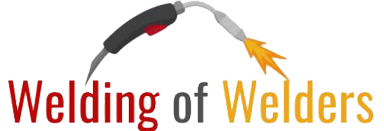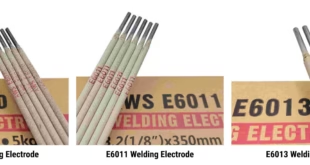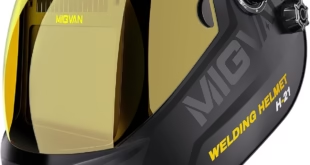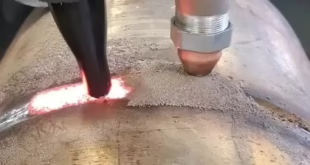A Guide to Selecting All-Purpose Welding Rods
we’re diving deep into four of the most commonly used stick welding electrodes: E6010, E6011, E6013, and E7018. These rods each have their own personality, with different arc characteristics, flux compositions, penetration profiles, and power source requirements. Some hit hard and deep, others are mellow and forgiving. Some are perfect for out-of-position work, while others shine in structural fabrication.
We’ll break down what makes each electrode tick, where it shines (and where it doesn’t), and how to choose the right one for your project or training needs. If you’re a student learning the ropes or a seasoned welder teaching others, this article will give you a practical, side-by-side understanding of these essential rods—without the fluff.

The E6010 Electrode
- Deep Penetration Capabilities: E6010 is renowned for its deeply penetrating, forceful arc, driven by a high cellulose content in its flux. This makes it excellent for cutting through rust, paint, or surface contaminants and achieving strong root passes in pipe and plate welding.
- Suitability for Dirty or Painted Surfaces: The aggressive arc action helps to burn away impurities, making it more forgiving than other rods on less-than-perfectly prepared surfaces.
- Power Source Requirements: E6010 is designed exclusively for use with DCEP (DC+). It does not perform well on AC or DCEN.
- Limitations as a True “All-Purpose” Rod: Its restriction to DC+ limits its use with basic AC-only welders. The arc can be harsh and difficult for beginners to control, and the resulting weld bead is often rough with significant spatter. Slag removal can also be more challenging compared to other types. While versatile in penetration and position, its power source limitation and demanding arc prevent it from being universally applicable.
The E6011 Electrode
- Similarities and Differences Compared to E6010: E6011 shares the high cellulose content and deep penetration characteristics of E6010. It also produces a similarly forceful arc and is an all-position electrode. The key difference lies in the addition of potassium compounds to the flux.
- Enhanced Versatility with AC Power Sources: These potassium compounds stabilize the arc when using AC power, making E6011 functional on AC, DCEP, and DCEN (though DCEP or AC are most common). This significantly broadens its applicability, especially for users with transformer-based AC welders.
- Common Uses in Maintenance and Repair: Due to its penetration, all-position capability, and AC/DC compatibility, E6011 is a popular choice for maintenance, repair work, and general fabrication where surface conditions might not be ideal and various power sources may be encountered. It essentially offers E6010-like performance with added electrical versatility.
The E6013 Electrode
- Softer Arc Characteristics: E6013 features a high rutile content in its flux, resulting in a much softer, smoother, and more stable arc compared to the E6010/E6011 types. This makes it significantly easier for beginners to learn and control.
- Flatter Bead Profile and Easier Slag Removal: The rutile flux produces a fluid slag that covers the bead well and is typically very easy to remove, often peeling off with minimal effort. The resulting weld bead is smoother with less spatter. It performs well on both AC and DC (either polarity).
- Applications in Sheet Metal and General Fabrication: Its gentle arc makes it suitable for welding thinner materials (sheet metal) where burn-through is a concern. It’s widely used for general-purpose fabrication of mild steel where deep penetration isn’t the primary requirement and aesthetics matter.
- Considerations Regarding Penetration Depth: The primary trade-off for its ease of use is shallower penetration compared to E6010 or E6011. It requires cleaner surfaces for optimal results and may not be the best choice for critical root passes or welding through contaminants.
The E7018 Electrode
- Superior Mechanical Properties: E7018 offers a higher tensile strength (70 ksi minimum) and produces welds with excellent ductility and crack resistance, making it suitable for structural steel, high-carbon steels, and applications demanding high weld quality. Its flux contains iron powder, which increases deposition rates.
- Low Hydrogen Designation and Its Importance: The key feature is its “low hydrogen” flux coating, designed to minimize the amount of hydrogen introduced into the weld pool. Hydrogen can lead to cracking, especially in thicker or higher-strength steels. This low-hydrogen characteristic is crucial for critical applications.
- Stringent Storage Requirements: To maintain its low-hydrogen properties, E7018 must be stored in specific conditions, typically in a heated rod oven, to prevent moisture absorption by the flux coating. Exposure to ambient humidity compromises its performance and low-hydrogen status.
- Often Recommended but Requires More Care: While offering all-position capability (typically run on DCEP or AC) and high-quality welds, the strict storage requirements and the need for clean base metal make it less “all-purpose” in the context of casual or field repairs where conditions aren’t controlled. The arc is also less forceful than E6010/E6011 and requires a specific technique (like a short, tight arc length) for best results.

Critical Selection Factors Beyond the Rod Designation
Choosing the “best” all-purpose rod isn’t just about picking E6011 or E6013. Several job-specific factors must guide the decision:
- Matching Electrode to Base Metal Thickness and Type: Thicker materials generally benefit from the deeper penetration of E6010/E6011 or the higher deposition rates of E7018. Thinner materials are often better suited to the gentler arc of E6013. While primarily for mild steel, E7018 can handle some higher carbon or alloy steels better than the 60xx series.
- Welding Position Requirements: All four discussed electrodes (E6010, E6011, E6013, E7018) are classified as all-position, but operator technique and preference can vary. Some find the fast-freezing slag of E6010/E6011 easier for vertical or overhead work, while others prefer the control offered by E7018 despite its specific technique requirements.
- Power Source Availability and Amperage Range: This is often a deciding factor. If only an AC welder is available, E6010 is ruled out. E6011 and E6013 offer great AC performance. E7018 can run on AC but often performs best on DCEP. The machine’s amperage output must also match the recommended range for the chosen electrode diameter.
- Weld Quality Standards and Mechanical Property Needs: For general repairs or non-structural fabrication, E6011 or E6013 may suffice. For coded structural work, pressure vessels, or applications demanding high strength and toughness, the low-hydrogen E7018 is often mandated.
- Operator Experience and Preference: Beginners typically find E6013 the easiest to learn due to its smooth arc and easy slag removal. E6010/E6011 require more skill to manage the forceful arc. E7018 requires careful technique, particularly arc length control, and awareness of its storage needs. Experienced welders often develop preferences based on the feel and performance they are accustomed to.
Electrode Comparison Table
| Feature | E6010 | E6011 | E6013 | E7018 |
|---|---|---|---|---|
| Tensile Strength | 60,000 psi | 60,000 psi | 60,000 psi | 70,000 psi |
| Flux Coating Type | High Cellulose Sodium | High Cellulose Potassium | High Titania Potassium (Rutile) | Low Hydrogen Potassium + Iron Powder |
| Current Compatibility | DC+ only | AC, DC+ | AC, DC+, DC- | AC, DC+ |
| Welding Positions | All positions | All positions | All positions | All positions |
| Penetration Depth | Deep | Deep | Shallow to moderate | Moderate |
| Arc Characteristics | Forceful, aggressive arc | Similar to E6010 but more stable on AC | Soft, smooth arc | Smooth, stable arc |
| Slag Type | Thin, fast-freezing | Thin, fast-freezing | Thick, easy to remove | Heavy, easy to remove |
| Ease of Use | Challenging for beginners | Easier than E6010, but still requires skill | Very beginner-friendly | Moderate; requires proper technique and storage |
| Surface Preparation | Tolerant of rust, paint, and contaminants | Tolerant of rust, paint, and contaminants | Requires clean surfaces | Requires clean surfaces |
| Typical Applications | Pipeline welding, root passes, structural work | Maintenance, repair, outdoor welding, general-purpose welding | Sheet metal, light fabrication, hobby projects | Structural steel, pressure vessels, heavy equipment repair |
| Storage Requirements | Standard storage | Standard storage | Standard storage | Must be kept dry; store in rod oven to prevent moisture absorption |
Conclusion
While the search for a single, universally applicable “all-purpose” welding rod continues, electrodes like E6011 and E6013 come closest for general-purpose mild steel fabrication and repair, offering broad usability across positions and common power sources. E6011 provides greater penetration and tolerance for imperfect surfaces, often favored for repairs, while E6013 offers superior ease of use and bead appearance, ideal for thinner materials and general fabrication. E7018 stands out for applications demanding high strength and quality, provided its stringent low-hydrogen storage requirements are met.
 Welding of Welders All about Welding and Welders
Welding of Welders All about Welding and Welders




